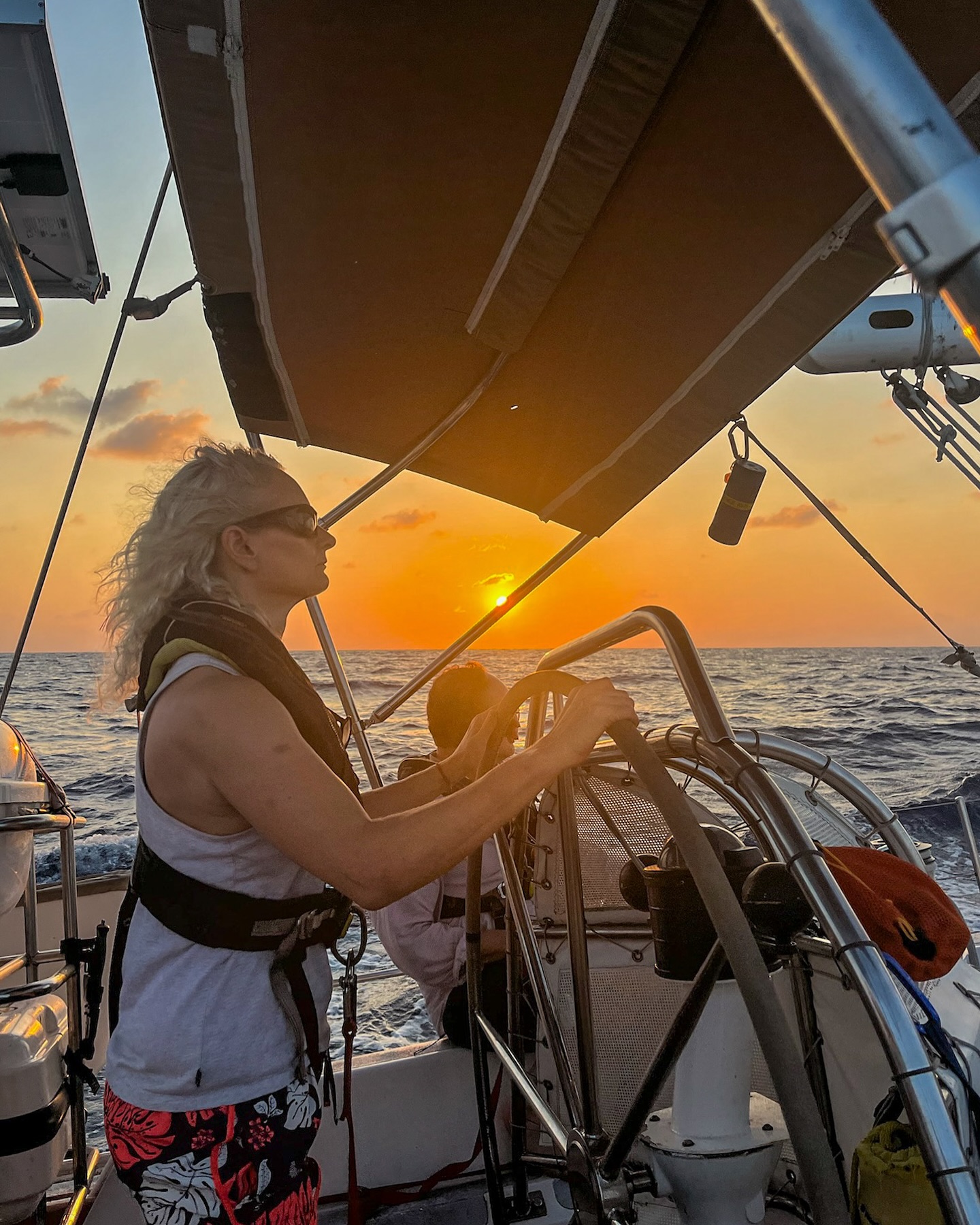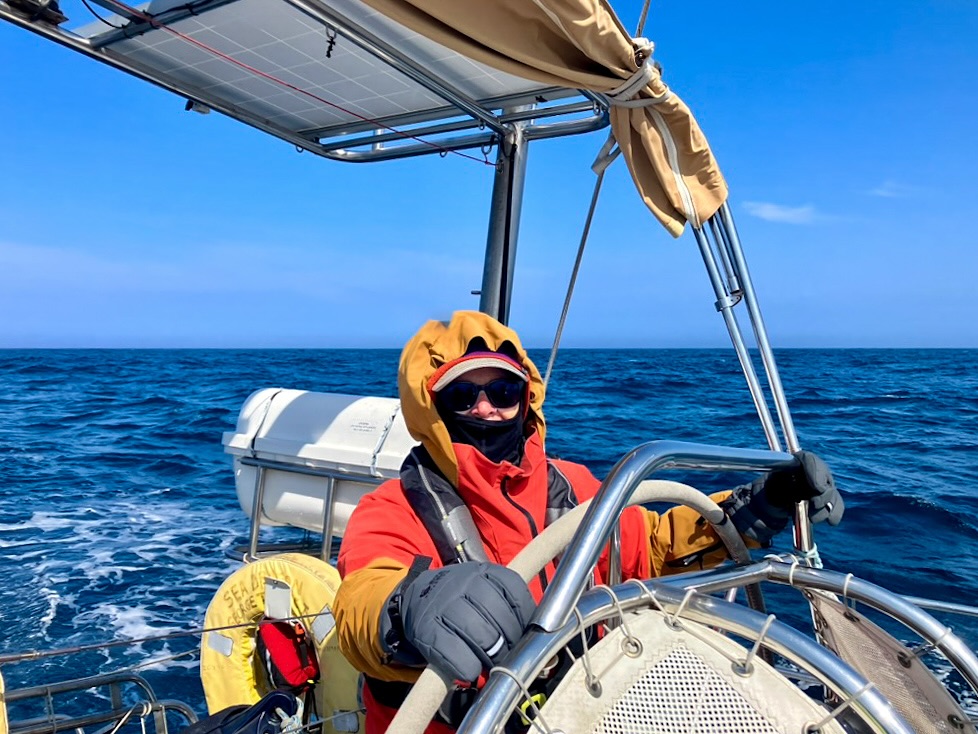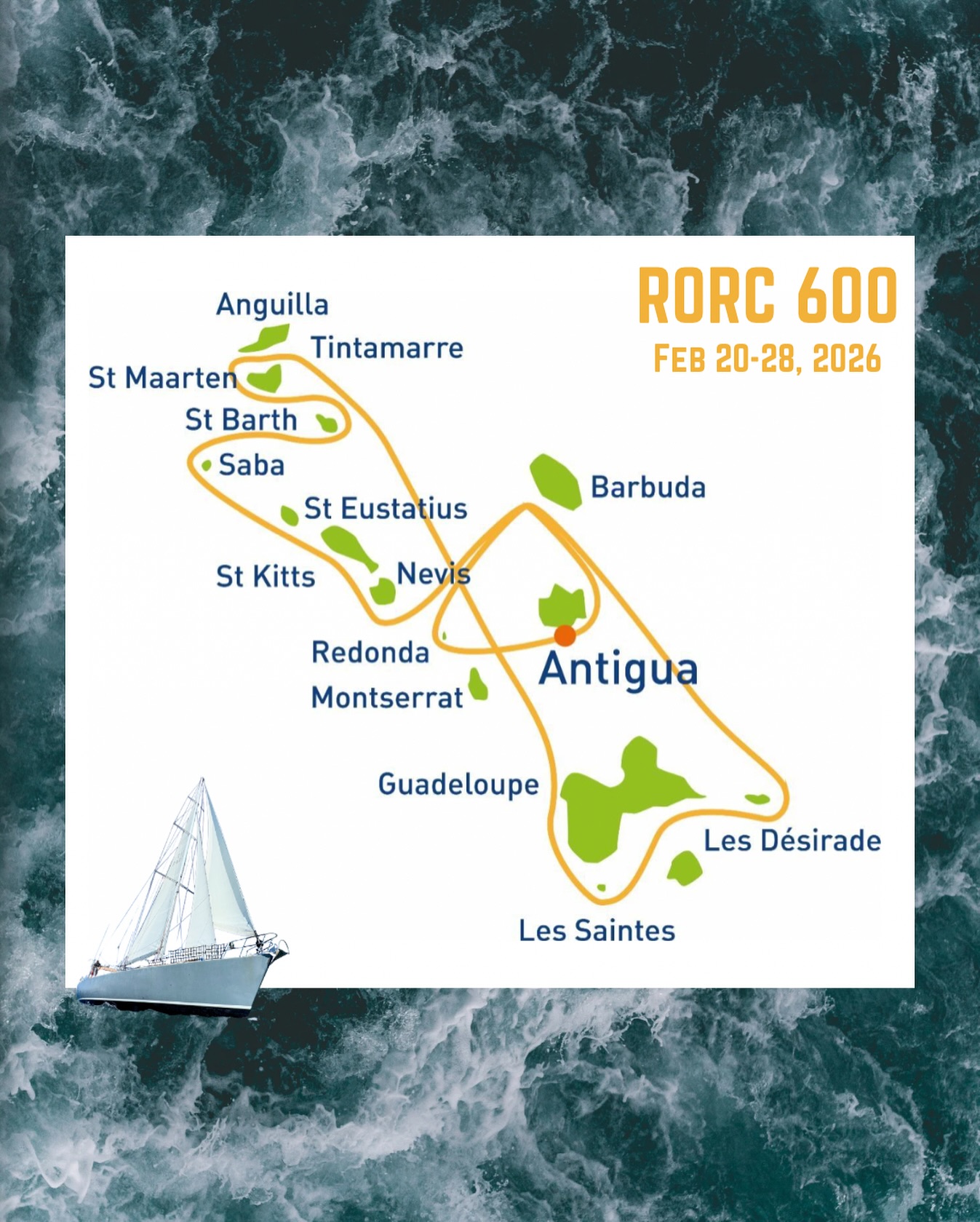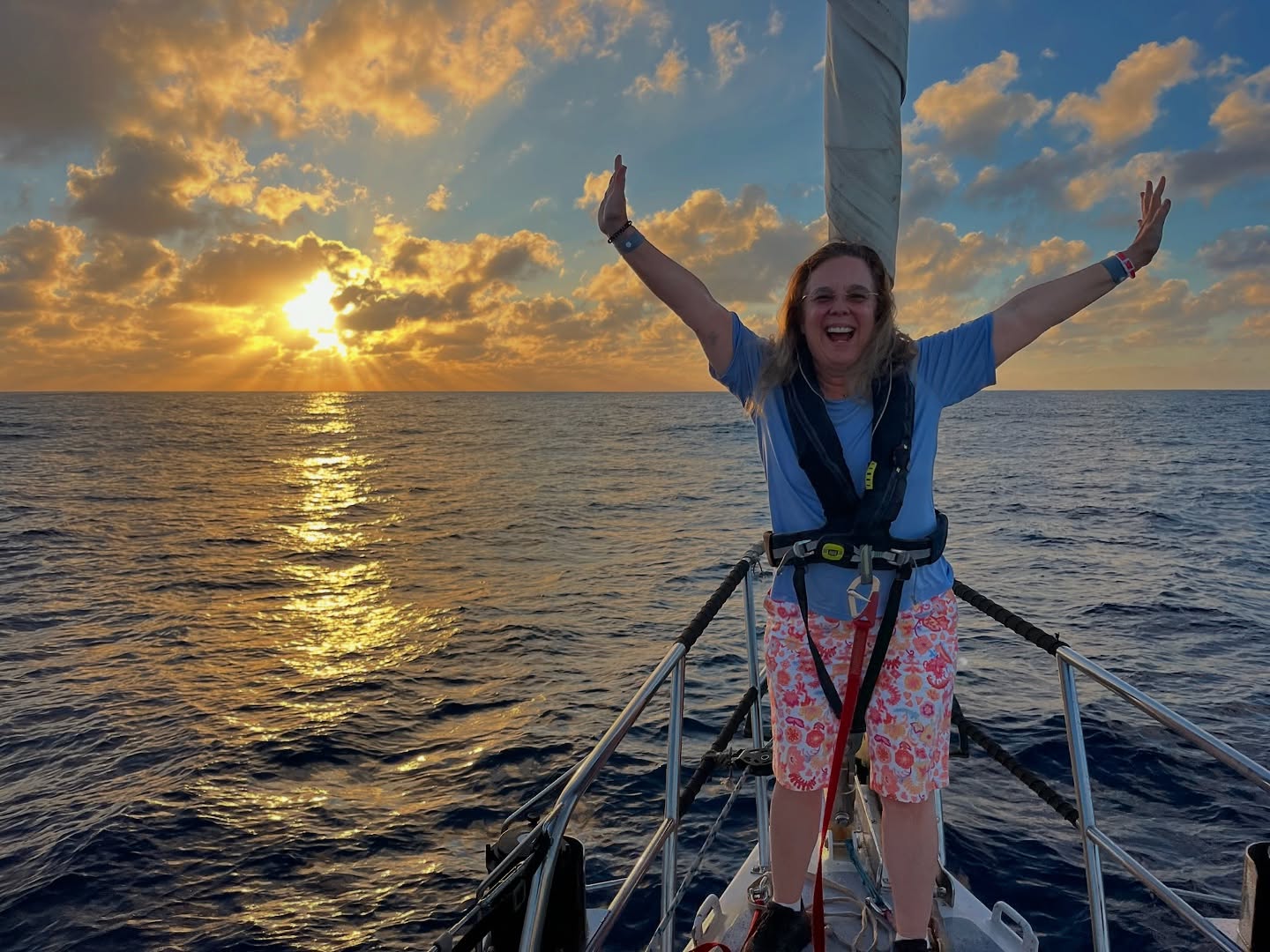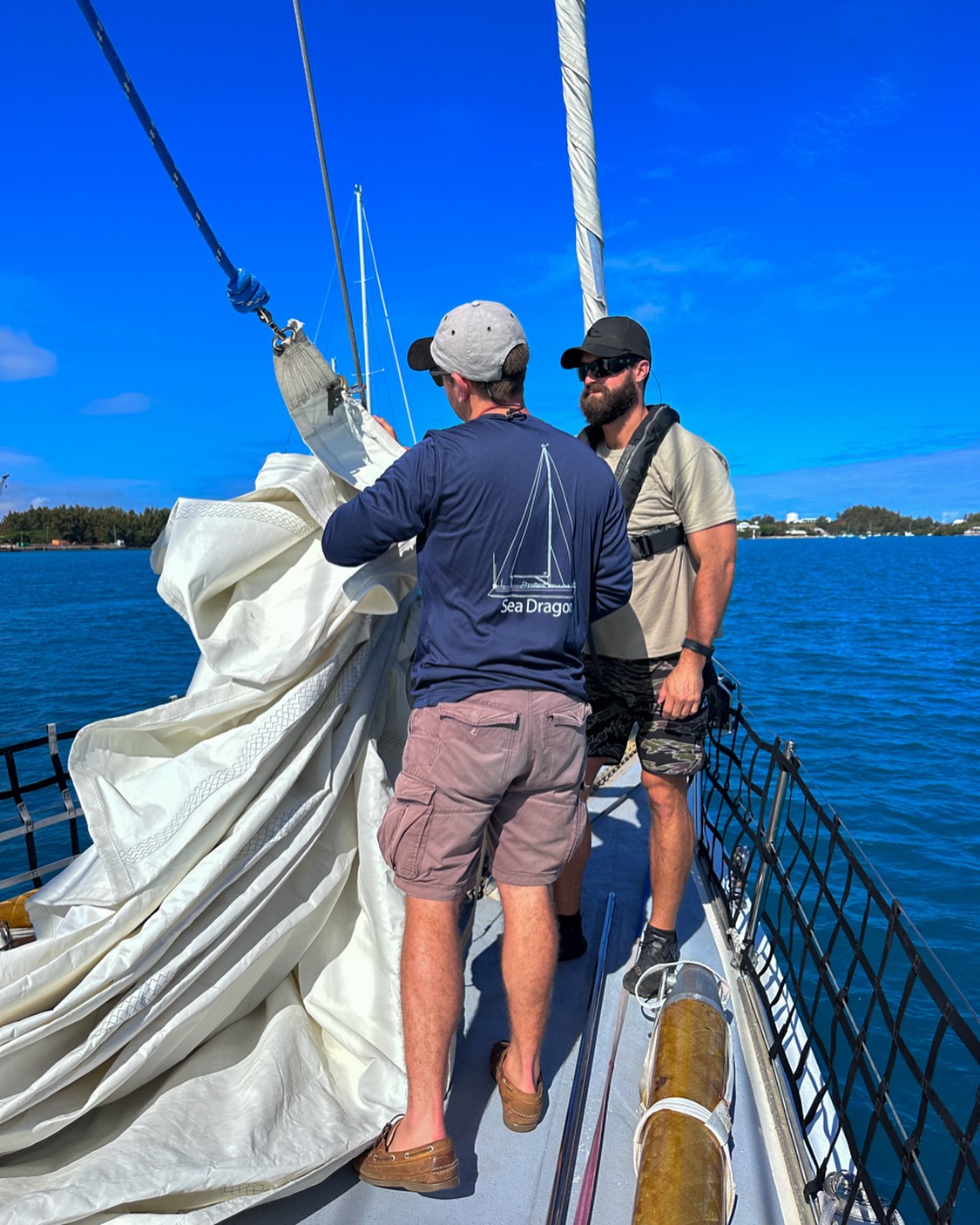This article was previously published at MIT.
PART II
On one side of the island, the slope underwater is very steep. Coral cascades down the slope in scalloped shelves and small fish take shelter in the crevices below. Brightly colored corals and fish make a rainbow surrounding us. Small anthea fish hang like a curtain, flashing with every movement in a mesmerizing display. Moray eels pop out from holes in the corals we sample. Sharks approach from the blue abyss and sea turtles flap by. It is truly a wonderland and I am almost disappointed when we finish collecting our samples from the island because it means we have to leave. But Jarvis had definitely not ruined diving for me, because I became hopelessly hooked and couldn’t wait for our next location, Howland Island.

It was on our way to the last island, Maiana, in the Gilbert Islands that we felt the real power of the wind. Or precisely, the lack of it: we were in a “hole,” a region of high pressure without a breath of wind. We competed as to who could catch the wind meter at its lowest – 3.2 knots? I can beat that, I saw it at 2.1! In a region that usually gets a steady 15 knots of tradewinds, this spelled trouble. Luckily, Seadragon has a motor so we weren’t reduced to carving scrimshaw while waiting for a puff of wind as we would have done 150 years ago.
The going was slow, and the heat built up. It wasn’t too bad to start the 6am watch, but after a couple of hours the equatorial sun was roasting the boat. It was a tough call between staying below deck, out of the sun but without a breeze, and above where the air was fresher but exposed to the life-sucking rays. We became listless and torpid. Food became less and less appealing, largely from the knowledge that turning on the stove would make the heat worse, and using the oven was pretty much unthinkable. In fact one day, an ominous electrical, burning smell filled the air and we traced the source to a piece of wiring melting from the heat. We appeared to be crawling across a new body of water: the great Pacific Lake. The surface was glassy and the whole dome of the sky was still. Once Pat called out “I see ripples! But now they’re gone.” I suppose the experience of being becalmed in the tropics is a time-honored one, but we were glad when we sputtered into the Gilbert Islands on our last few liters of diesel.

After a quick stop in Tarawa to refuel, we recovered beautiful coral cores from Maiana atoll. Then our work was done and we bid a sad farewell to the central Pacific. Our field work was extremely successful and we gathered all the coral samples that we had planned to, which was more than I could have hoped for. The scientists and the Seadragon crew worked together as a team for an unprecedented study of the central Equatorial Pacific. Being in the ocean, feeling the swell beneath the boat, becoming familiar with the corals, and even tasting the water (unintentionally), made me even more invested and passionate about my research. Having seen these islands I want to learn more about the corals that live on them. Now I have the means to answer some of those questions, and I am already thinking of reasons why I have to go back.












